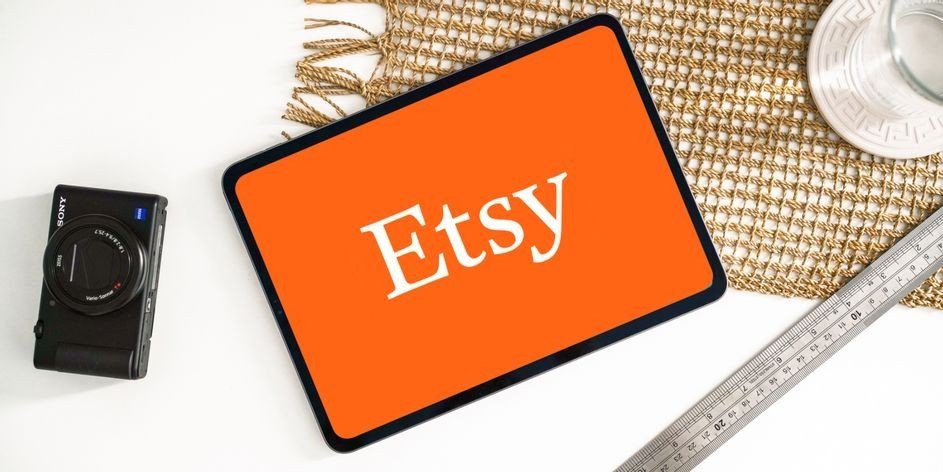Pricing handmade items on Etsy can be a challenging task for new and seasoned sellers alike. Setting the right price is essential for ensuring profitability while remaining competitive in the marketplace. Pricing too low can hurt your profits and devalue your work, while pricing too high can deter potential customers. In this guide, we’ll walk you through the essential steps and strategies for pricing handmade items on Etsy to maximize your profit.
Etsy for Maximum Profit
Setting the right price for your handmade items on Etsy is crucial for maximizing profit and attracting buyers. Effective pricing involves more than just covering costs—it requires a strategy that balances your expenses, desired profit margin, and competitive positioning in the Etsy marketplace. Whether you’re a new seller or looking to refine your pricing strategy, understanding how to price your handmade products can help you achieve financial success and grow your Etsy shop.

1. Understand Your Costs
Before you can set a price for your handmade items, it’s crucial to understand all the costs involved in creating and selling your products. These costs can be divided into two main categories: material costs and overhead costs.
- Material Costs: These are the direct costs of materials used to create your product. For example, if you make handmade jewelry, material costs include beads, wires, clasps, and any other components you use. Make sure to keep track of how much you spend on materials and factor in the cost per item.
- Overhead Costs: Overhead costs are expenses that aren’t directly tied to a specific product but are necessary to run your business. This includes things like utilities, rent for a workspace, tools, equipment, packaging supplies, and Etsy fees. It’s important to calculate a portion of your overhead costs for each product to ensure you cover these expenses.
- Labor Costs: Don’t forget to account for your time. Determine how long it takes you to make each item and decide on an hourly wage for yourself. For instance, if you spend two hours making a piece of jewelry and you decide your time is worth $20 per hour, then the labor cost for that item is $40.
2. Factor in Etsy Fees and Taxes
Etsy charges several fees that sellers need to consider when pricing their items:
- Listing Fee: Etsy charges a $0.20 listing fee for each item you list for sale. This fee is charged whether or not your item sells.
- Transaction Fee: Etsy also takes a 6.5% transaction fee on the sale price, including the shipping cost and any additional charges.
- Payment Processing Fee: In addition to the transaction fee, Etsy charges a payment processing fee, which varies by country. In the United States, the fee is typically 3% + $0.25 per transaction.
To accurately price your items, factor in these fees along with any sales tax that may apply. You can use Etsy’s fee calculator to estimate the total fees for each sale, ensuring you don’t accidentally underprice your products.
3. Research Your Market and Competitors
Understanding your market and what competitors are charging for similar items is crucial for pricing your handmade goods effectively.
- Analyze Competitors’ Pricing: Search for items similar to yours on Etsy and take note of the prices. Consider factors such as quality, materials, and customer reviews. This will give you a benchmark for setting your prices within a competitive range.
- Identify Your Target Audience: Determine who your ideal customer is and what they’re willing to pay. If your target audience values high-quality, unique handmade items, they may be willing to pay more than a general audience. Aligning your pricing with the expectations of your target audience can help you attract the right buyers and increase sales.
- Consider Market Trends: Pay attention to trends within your niche on Etsy. If certain styles or products are currently popular, you might be able to charge a premium price. Alternatively, if the market is saturated, you may need to adjust your pricing to stay competitive.
4. Calculate Your Break-Even Price
Your break-even price is the minimum price at which you need to sell your item to cover all costs (materials, labor, overhead, and Etsy fees). To calculate your break-even price, use the following formula:
Break-even Price=Material Costs+Labor Costs+Overhead Costs+Etsy Fees\text{Break-even Price} = \text{Material Costs} + \text{Labor Costs} + \text{Overhead Costs} + \text{Etsy Fees}
Understanding your break-even price ensures that you aren’t selling your products at a loss. Once you know your break-even price, you can add a markup to ensure profit.
5. Determine Your Profit Margin
Your profit margin is the difference between your selling price and your break-even price. It’s important to decide on a profit margin that not only covers your costs but also reflects the value of your time, creativity, and business goals.
- Set a Desired Profit Margin: A common approach is to aim for a profit margin between 20% to 50%, depending on your niche, product demand, and customer willingness to pay. For example, if your break-even price is $50 and you want a 40% profit margin, your selling price should be:
Selling Price=Break-even Price×(1+Profit Margin)\text{Selling Price} = \text{Break-even Price} \times (1 + \text{Profit Margin})
Using the formula:
Selling Price=50×(1+0.40)=70\text{Selling Price} = 50 \times (1 + 0.40) = 70
This means you would price the item at $70 to achieve a 40% profit margin.
6. Consider Pricing Strategies
Choosing the right pricing strategy can help you maximize profits and attract more customers on Etsy. Here are a few popular pricing strategies:
- Keystone Pricing: This strategy involves doubling the cost of producing your item to determine the selling price. It’s a straightforward approach but may not work for all types of products or market conditions.
- Cost-Plus Pricing: This method involves adding a specific percentage markup to your break-even price. It ensures all costs are covered while providing a desired profit margin.
- Competitive Pricing: Set your prices based on what competitors are charging for similar products. This strategy can help you stay competitive but may require adjustments to maintain profitability.
- Psychological Pricing: Pricing your products just below a round number (e.g., $49.99 instead of $50) can make them appear more attractive to buyers. This strategy leverages psychological triggers to encourage purchases.
- Value-Based Pricing: This approach focuses on the perceived value of your product to the customer. If your products are unique, high-quality, or handmade with exceptional craftsmanship, you can price them higher based on the value they provide.
7. Test and Adjust Your Prices
Pricing is not a one-time decision; it requires continuous evaluation and adjustment. Here’s how you can test and optimize your prices:
- Experiment with Different Prices: Try listing similar items at different price points to see which performs better. Monitor sales and customer feedback to gauge the effectiveness of each price.
- Offer Discounts and Promotions: Temporary discounts or promotions can help boost sales and attract new customers. Consider offering discounts on slow-moving items or during holiday seasons to encourage purchases.
- Analyze Sales Data: Regularly review your Etsy sales data to understand how your pricing impacts sales and profitability. If a particular item isn’t selling well, consider adjusting the price or reevaluating your marketing strategy.
8. Communicate Value to Your Customers
Justifying your pricing to potential customers involves clearly communicating the value of your products. Here are some tips for conveying value:
- Highlight Unique Features and Benefits: Emphasize what makes your products special, such as the quality of materials, craftsmanship, or unique design. Use your product descriptions to tell the story behind your items and the effort involved in creating them.
- Showcase Customer Reviews and Testimonials: Positive reviews and testimonials can build trust and demonstrate the value of your products. Encourage satisfied customers to leave feedback and share their experiences.
- Offer Detailed Product Descriptions and Photos: Provide comprehensive product descriptions and high-quality photos that showcase your items from multiple angles. This helps customers understand exactly what they’re purchasing and justifies a higher price.
9. Account for Changes in Costs and Market Trends
Over time, your material costs, overhead expenses, and market conditions may change, impacting your pricing strategy. Here’s how to stay adaptable:
- Monitor Your Costs: Regularly review your material and overhead costs to ensure your pricing remains profitable. Adjust your prices if necessary to account for any increases in costs.
- Stay Updated with Market Trends: Keep an eye on trends within your niche and adjust your pricing accordingly. If demand for a particular type of product increases, you may be able to raise your prices.
- Adjust for Seasonal Demand: Consider adjusting your prices based on seasonal demand. For example, if you sell handmade holiday decorations, you might raise prices during peak season to maximize profits.
Pricing handmade items on Etsy for maximum profit involves understanding your costs, researching the market, and choosing the right pricing strategy. By calculating your break-even price, setting a desired profit margin, and continuously testing and adjusting your prices, you can ensure your Etsy shop remains profitable while providing value to your customers. Remember, effective pricing is not just about covering costs—it’s about conveying the value of your handmade creations and building a sustainable business on Etsy.






